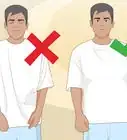This article was co-authored by Dean Theriot and by wikiHow staff writer, Hunter Rising. Dean Theriot is a Personal Trainer and the Owner of Timberline Fitness in Houston, Texas. With over 25 years of experience in the fitness industry, Dean specializes in personal, group, and sport-specific training. Dean holds a BS in Exercise Physiology from LSU. Dean combines resistance and cardiovascular training with pilates exercises for comprehensive workouts for his clients. His sport-specific training includes football, basketball, and baseball.
There are 9 references cited in this article, which can be found at the bottom of the page.
This article has been viewed 68,832 times.
Resistance bands are lightweight and versatile pieces of workout equipment that you can use to exercise any part of your body. When you want to work out your upper arms, bicep curls with your resistance band are great for a medium-intensity exercise. You can perform resistance band bicep curls while you’re standing or when you’re seated. If you want to work your arms and legs at the same time, do lunges while you curl.
Steps
Standing Resistance Band Bicep Curls
-
1Stand on the middle section of a resistance band.[1] Hold the ends of your resistance band so the middle section is on the floor. Step onto the band with one of your feet so the band is in the center of your foot. Then place your other foot on the resistance band so your feet are shoulder-width apart. Make sure the band doesn’t move around and that your feet are comfortable.[2]
- You can buy resistance bands from any fitness store or online.
- If you want an easier workout, only step on the resistance band with one foot instead.
-
2Hold the ends of the resistance band in your hands.[3] Stand with your back straight and look forward while you perform your exercise. Keep your arms straight down with your palms at your side so they face inward. Hold the band so there’s a small amount of tension between your hands and your feet.[4]
- Some resistance bands have handles so you can easily hold onto them. Otherwise, grab and hold them as tight as you can.
Tip: Bands come with various levels of resistance so choose a band that you can handle throughout the length of your workout.
Advertisement -
3Bend your elbows and hold your curl for 2-3 counts. Raise your hands to stretch the ends of the resistance band and pull them tight. Use a slow, controlled motion so the bands don’t snap or slip. Bring your hands in front of your shoulders and flex your biceps for 1-2 seconds to work your muscles.[5]
- If you want to make your curl more challenging, hold dumbbells as well as the resistance band.
- You can choose to raise both your arms at once or alternate arms with each curl.
-
4Lower your arms slowly to complete your rep. After your count, straighten out your arms again at the same controlled speed. Don’t let go of the bands when you bring your arms down, or else you could hurt yourself. Once your hands are at your side and the resistance band feels loose again, rest for 1 count before continuing your reps.[6]
- Complete 2-3 sets of 10-15 reps during your workout sessions.
- Don’t lift your feet at any point during your curl since the resistance band could snap up and hurt you.
Seated Resistance Band Bicep Curls
-
1Put a resistance band under your feet while you’re sitting in a chair. Use a chair or bench that doesn’t have any sides when you do your curls. Slide the center of your resistance band underneath your feet so they’re shoulder-width apart. Once the resistance band is secure under your feet, sit up so your back is straight and you’re looking forward.
- Make sure the chair or bench you’re using doesn’t move around too much or else the resistance band could slip from underneath your feet.
Tip: Only put the resistance band under one foot if you want to make your workout session easier.
-
2Hold the ends of the resistance band so your palms face inward. Keep your arms at your side so they hang down past the seat. Get a tight grip on the ends of the resistance band so it has a small amount of tension while you’re relaxed. Make sure your palms face inward so you can perform your curls easily.
- Check if your resistance band has attachable handles to make holding onto it easier.
-
3Curl your arms toward your chest to stretch the resistance band. Avoid moving your back, shoulders, and elbows while you perform your curl. Stretch the resistance band by bringing your hands up toward your chest and keep your wrists straight so your hands line up with your forearms. Once you reach the top of your curl, hold it for 1-2 seconds.
- Use dumbbells as well as your resistance band to make your workouts more challenging. Use lighter weights since the resistance band will already make it difficult to lift.
- Lift both arms at the same time or alternate arms with each curl.
-
4Lower your arms until they’re straight after 1-2 counts. Slowly lower your arms until they’re straight and the resistance bands are relaxed. Don’t let the band pull your arms down quickly because it won’t make your workout as beneficial. At the end of your rep, take a brief pause before continuing your set.
- Perform 2-3 sets of 10-15 reps.
- If you want more resistance, space your feet wider apart and choke up on the ends of the bands.
Bicep Curls with Lunges
-
1Step on the center of the resistance band with one of your feet. Choose one of your feet to start with and stand on the middle of the band with it. Position the band so it’s underneath your toes rather than in the center of your foot. Hold the ends of the resistance band with both hands so it has a small amount of resistance when your arms are straight.[7]
- It doesn’t matter which foot you start with since you’ll switch them later on.
- You can choose to curl both arms at the same time or only curl the arm that’s opposite of the leg you’re stepping forward with.
-
2Take a large step forward with your other foot. Step forward with your other foot so it’s about 2–3 feet (61–91 cm) in front of the resistance band. Make sure your feet point forward so you can maintain your form. Keep your knees slightly bent and your back straight so you’re looking forward.[8]
- Stepping forward adds tension to the resistance band. If it feels too tight or difficult to pull, loosen your grip on the end or use a lower resistance.
- Don’t step too far forward where you’ll easily lose your balance since the resistance band could snap back toward you if you fall.
-
3Bend your knees so they form 90-degree angles. Lower your body closer to the ground by bending your knees. Keep your back straight as you get closer to the ground to work out your legs and hips. When your knee in front forms a 90-degree angle, keep holding the position for 1-2 seconds.[9]
- Don’t lift your feet off the ground while you’re lunging since the resistance could slip from underneath your foot.
-
4Curl your arms toward your shoulder while maintaining the lunge position. As you lower your body into the lunge position, bend your elbows to bring your hands closer to your shoulders. Keep your palms facing inward and your wrists straight to make stretching the resistance band slightly easier. Once your biceps are flexed, hold the lunge position and curl for about 1 second. Then lower your arms slowly to finish the curl.[10]
- You can use dumbbells if you want to add more weight to your routine.
- After 10-15 reps, switch which leg is in back so you get an even workout.
- Perform 10-15 reps for each leg for 2-3 sets.
Warnings
- Be careful not to lift your foot while you’re stretching the resistance band since it could snap up and hurt you.⧼thumbs_response⧽
Things You’ll Need
- Resistance band
- Armless chair
- Dumbbells (optional)
References
- ↑ Dean Theriot. Personal Trainer. Expert Interview. 22 January 2021.
- ↑ https://youtu.be/ig8gfNVmd4E?t=49
- ↑ Dean Theriot. Personal Trainer. Expert Interview. 22 January 2021.
- ↑ https://youtu.be/pXS-fSPWpk8?t=19
- ↑ https://youtu.be/pXS-fSPWpk8?t=25
- ↑ https://youtu.be/pXS-fSPWpk8?t=29
- ↑ https://youtu.be/eBa7Mpvdj-8?t=3
- ↑ https://youtu.be/eBa7Mpvdj-8?t=5
- ↑ https://youtu.be/eBa7Mpvdj-8?t=9
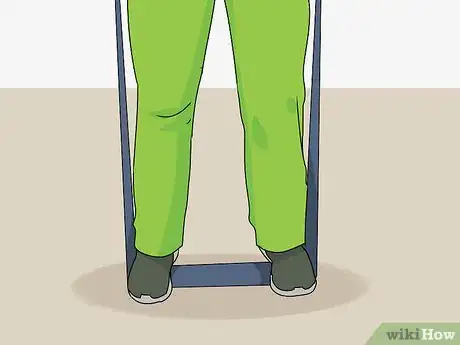

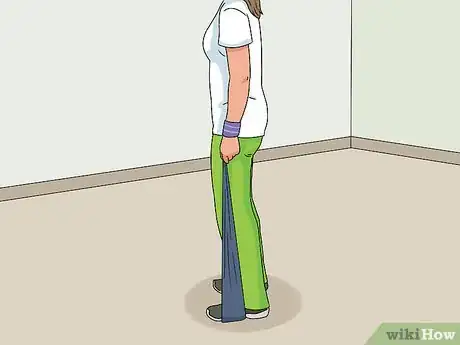



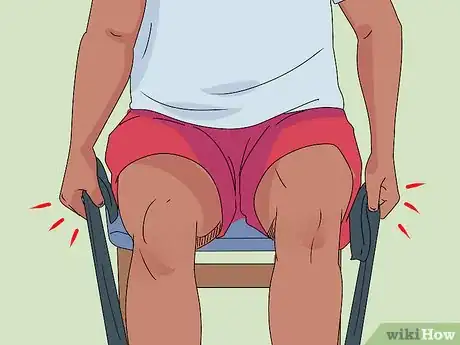
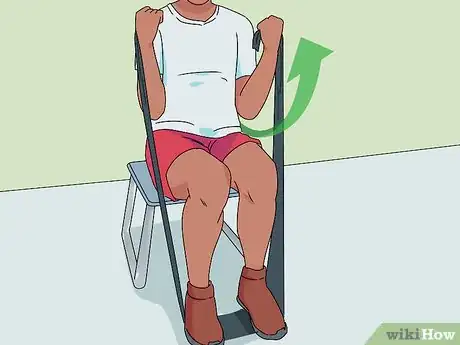


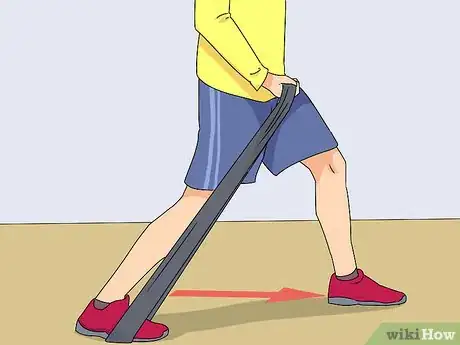

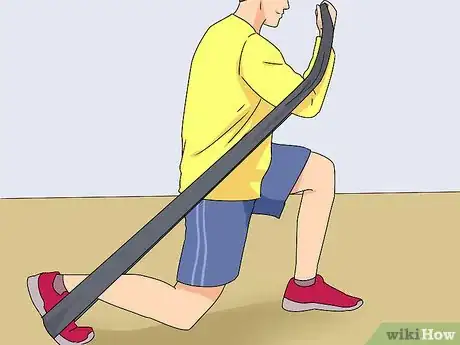



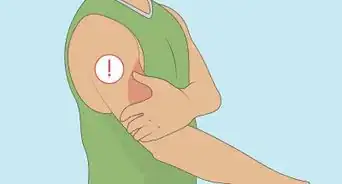

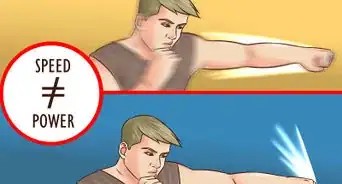
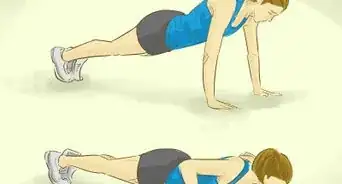
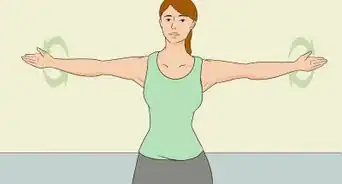
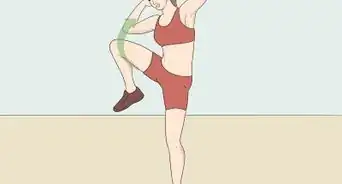
-Step-10-Version-5.webp)







